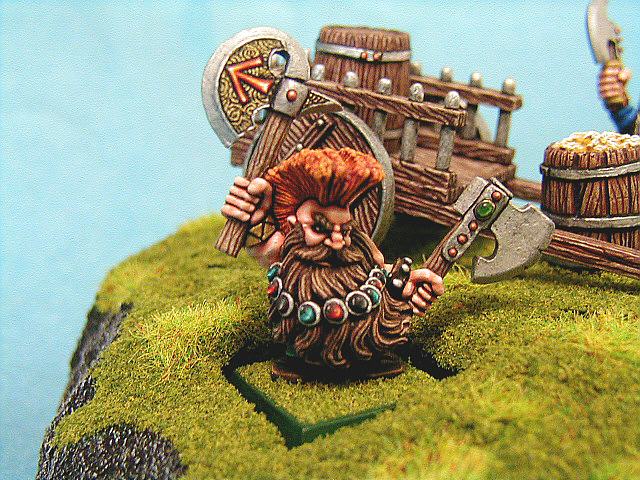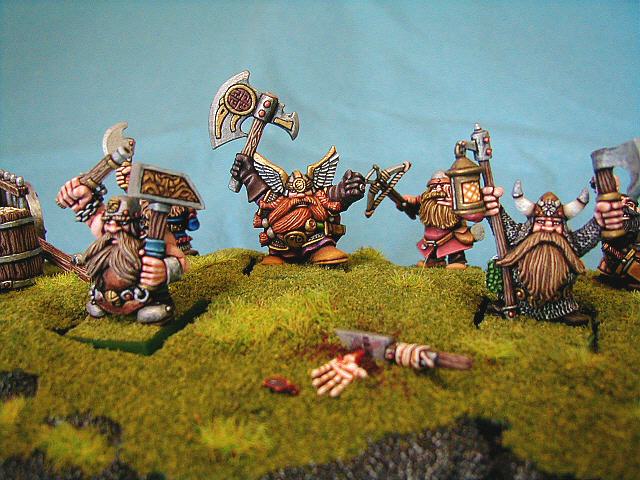Tips - Painting Miniature Eyes
|
Wooden objects are quite common on fantasy and historical miniatures. This section details four methods for painting wood. All the colors described in this section come from the Ral Partha paints range, though any paints may be utilized.
Color Schemes
I usually paint wood using two different color schemes. The first is a medium brown. A great example of this color scheme is the wood from the following picture. Both of the weapons and the beer cart were painted with the same colors.
The second color scheme that I use to paint wood has a white hue. The next picture displays an example of this tone. The dwarf at the center has an axe with a shaft of this color.
Wood Grain
After you have chosen a color scheme, the next step is to recognise what wood type you will be painting. There are two types of wood, scuplted and smooth. Sculpted means the wood grain has been sculpted onto the figure. Smooth is when no wood grain has been sculpted onto the miniature. Thus, a smooth surface. The beer cart shown above has a sculpted wood grain surface and the white axe shaft from the second picture is a smooth surface.
Sculpted Wood Grain - Medium Brown Color Scheme
Sculpted Wood Grain -White Brown Color Scheme
Smooth Wood Grain - Medium Brown Color Scheme
Smooth Wood Grain - White Brown Color Scheme
Conclusion
Of the techniques described above, the sculpted grain styles are the simplest because they involve drybrushing. Watch that you don't let the paint get too thick or else the wood will look chalky. The smooth grain styles involve layering which requires more patience, time, and skill. The more you practice any of these techniques, the more realistic that the wood will appear. Once you have mastered these styles, try some different color combinations.
|
||

 View Medium Scheme
View Medium Scheme
 View White Scheme
View White Scheme